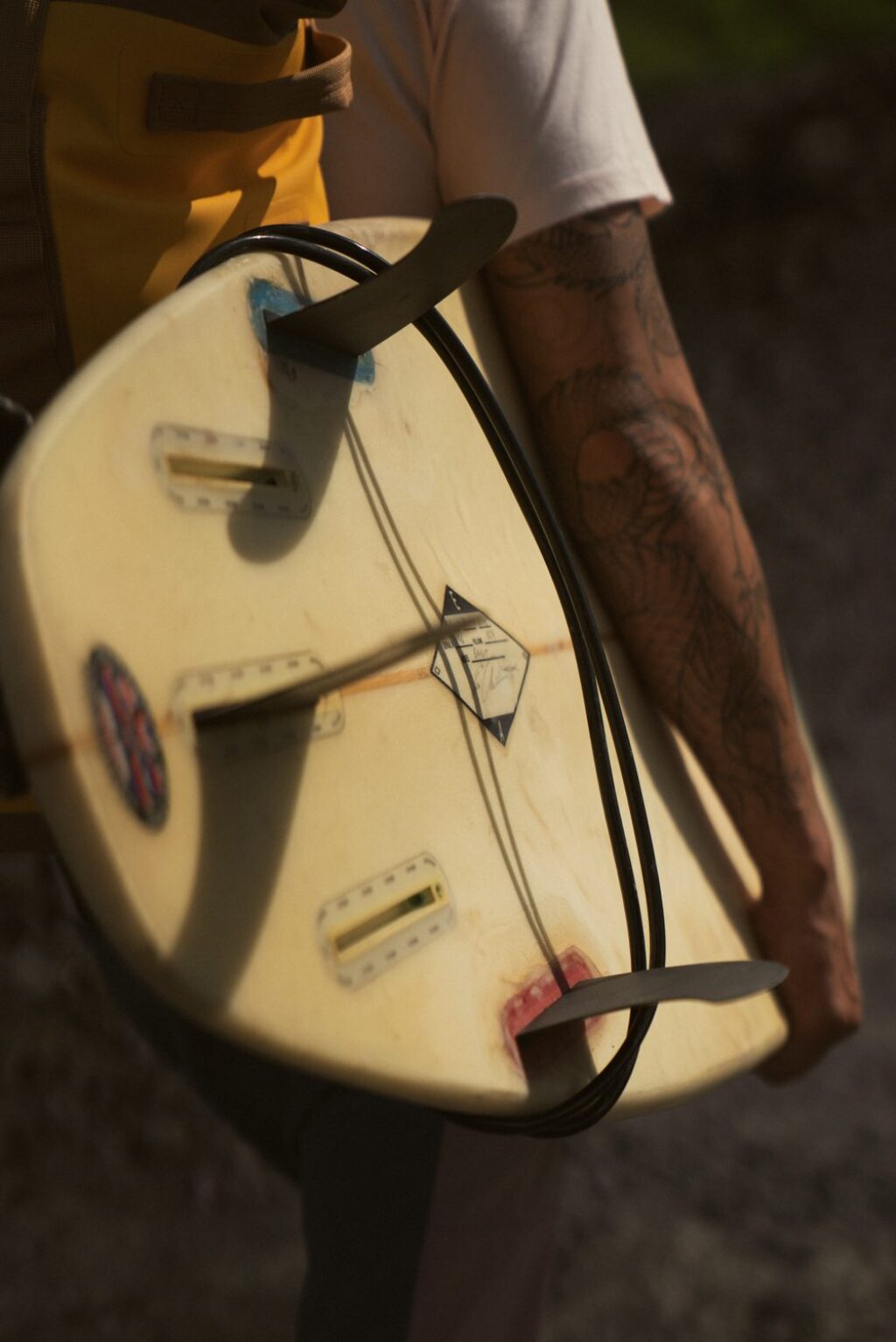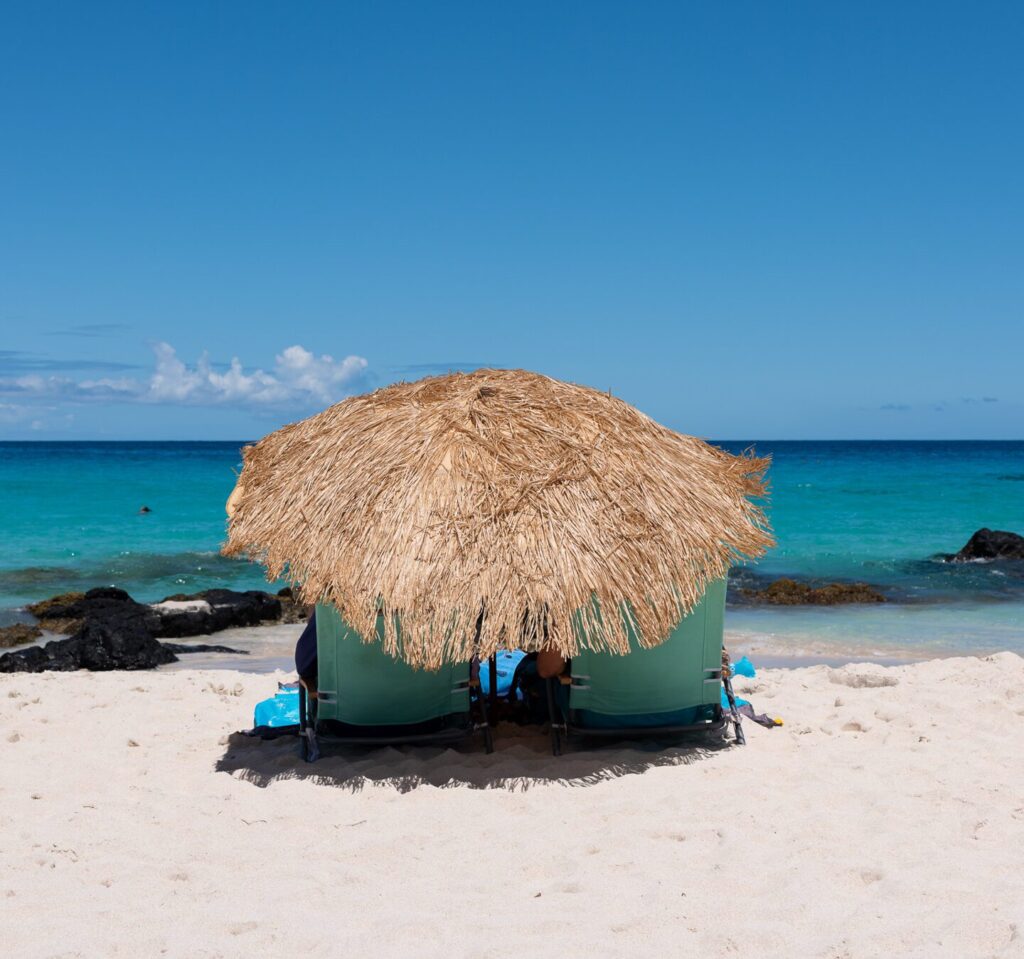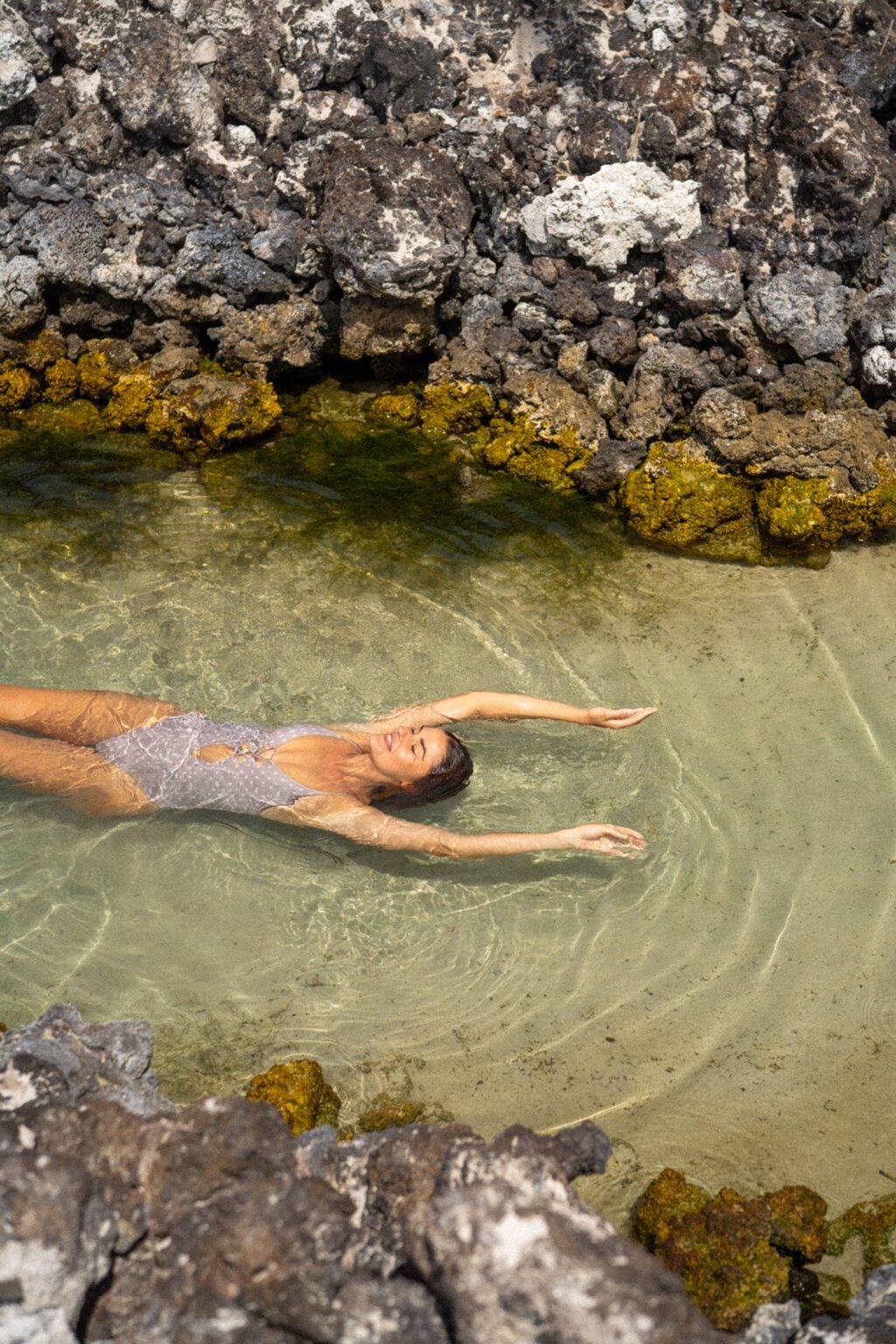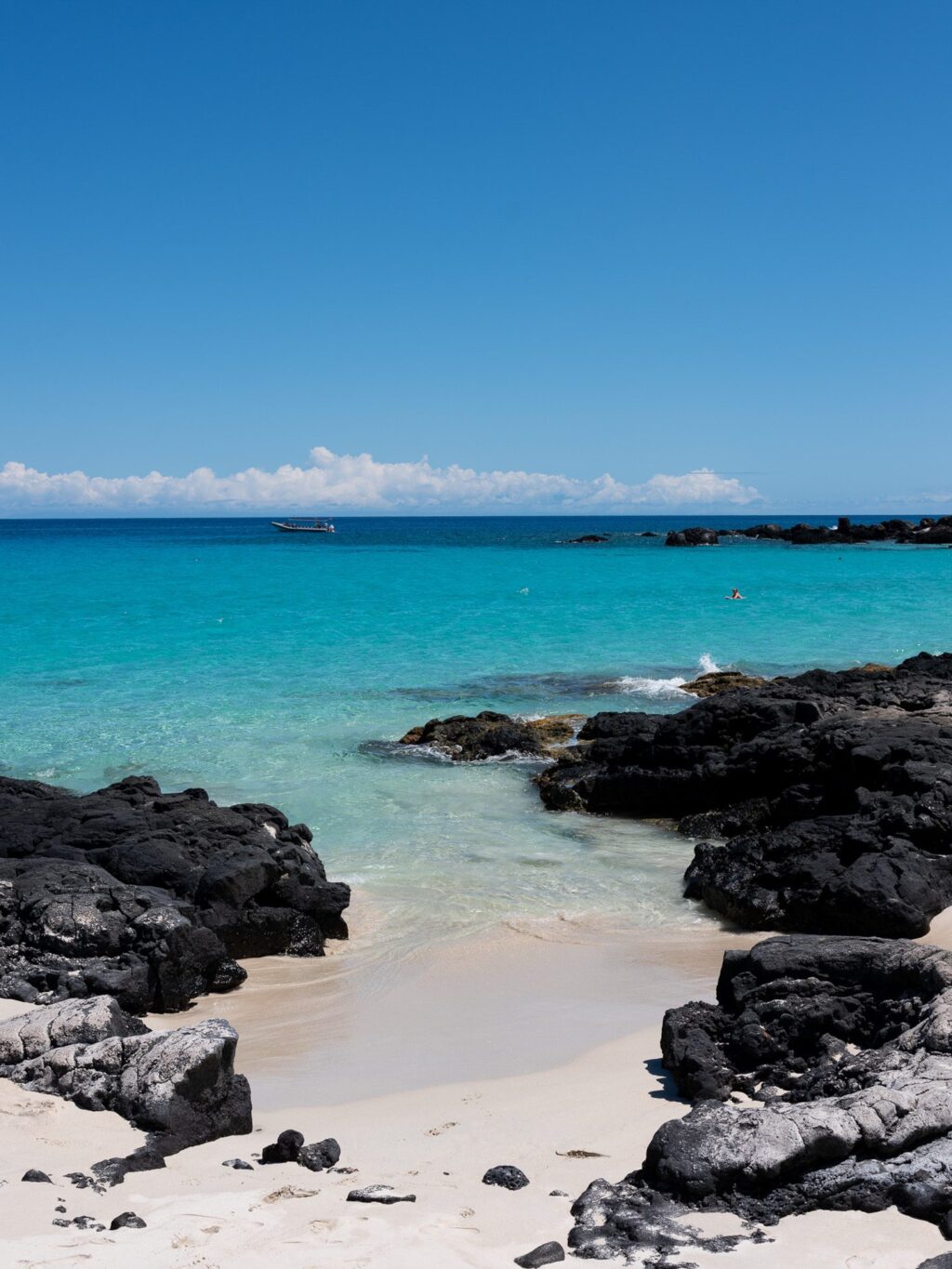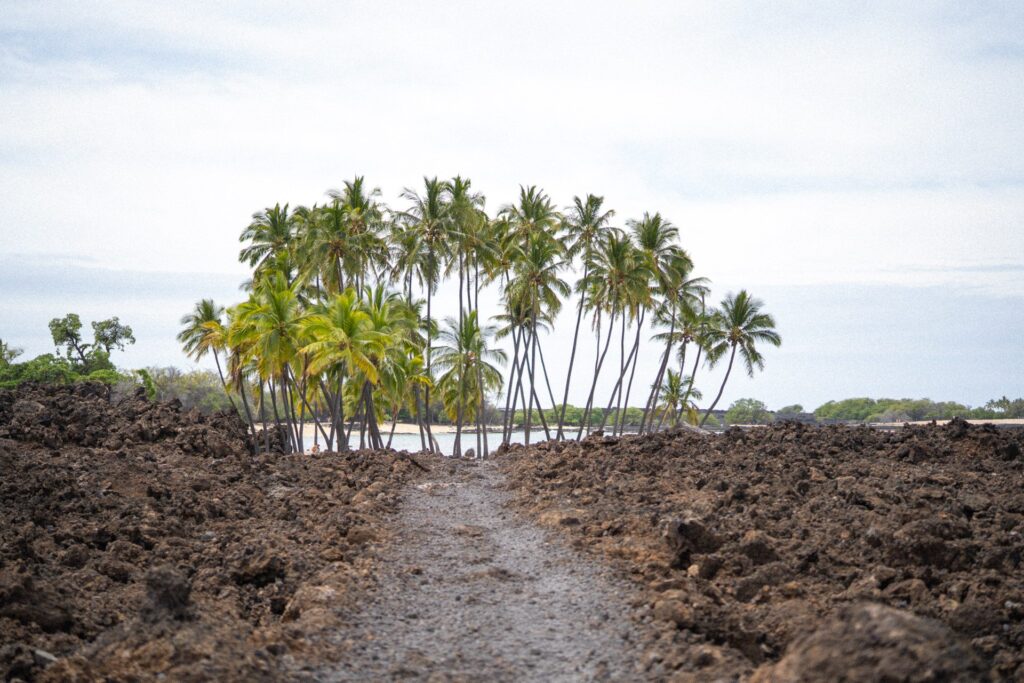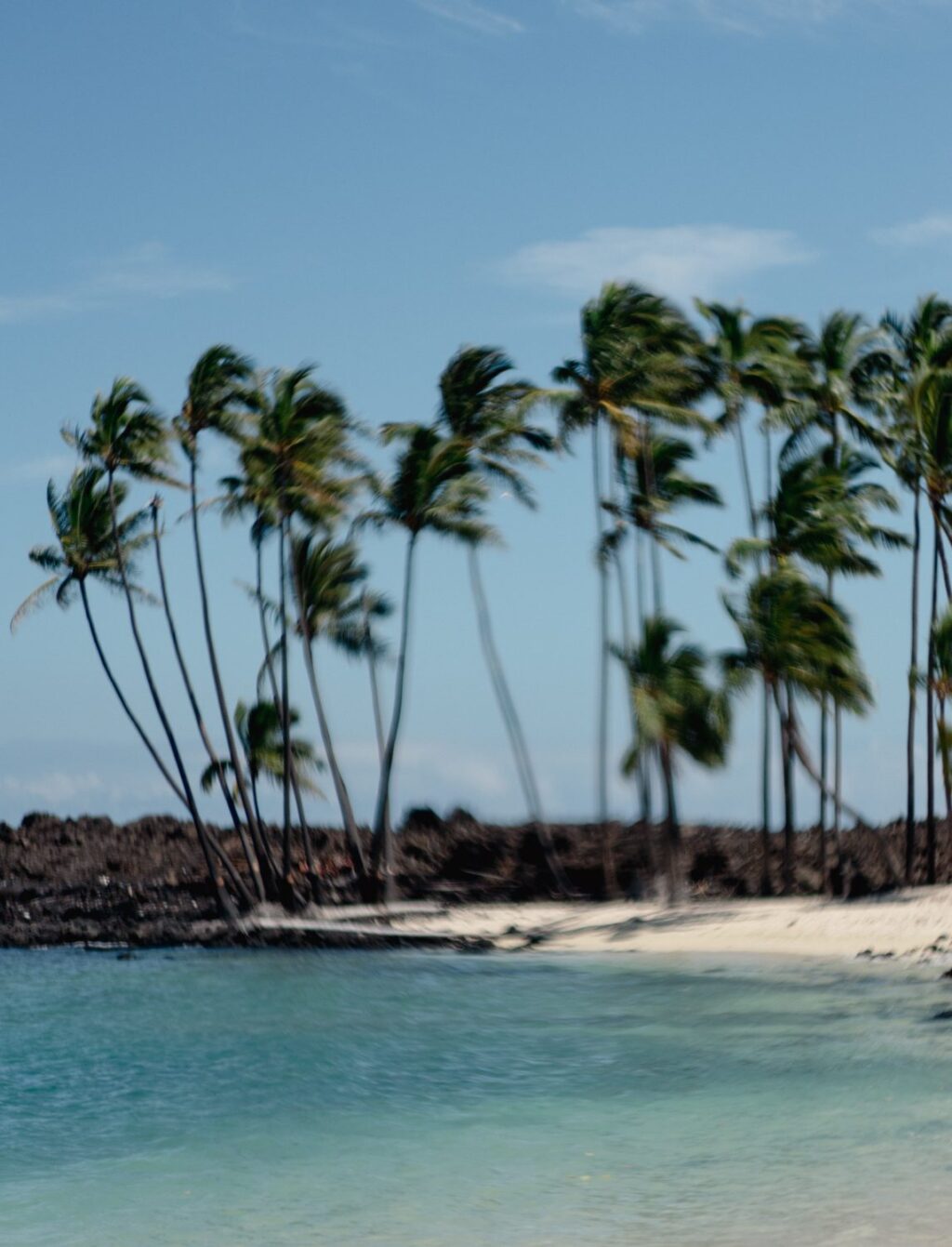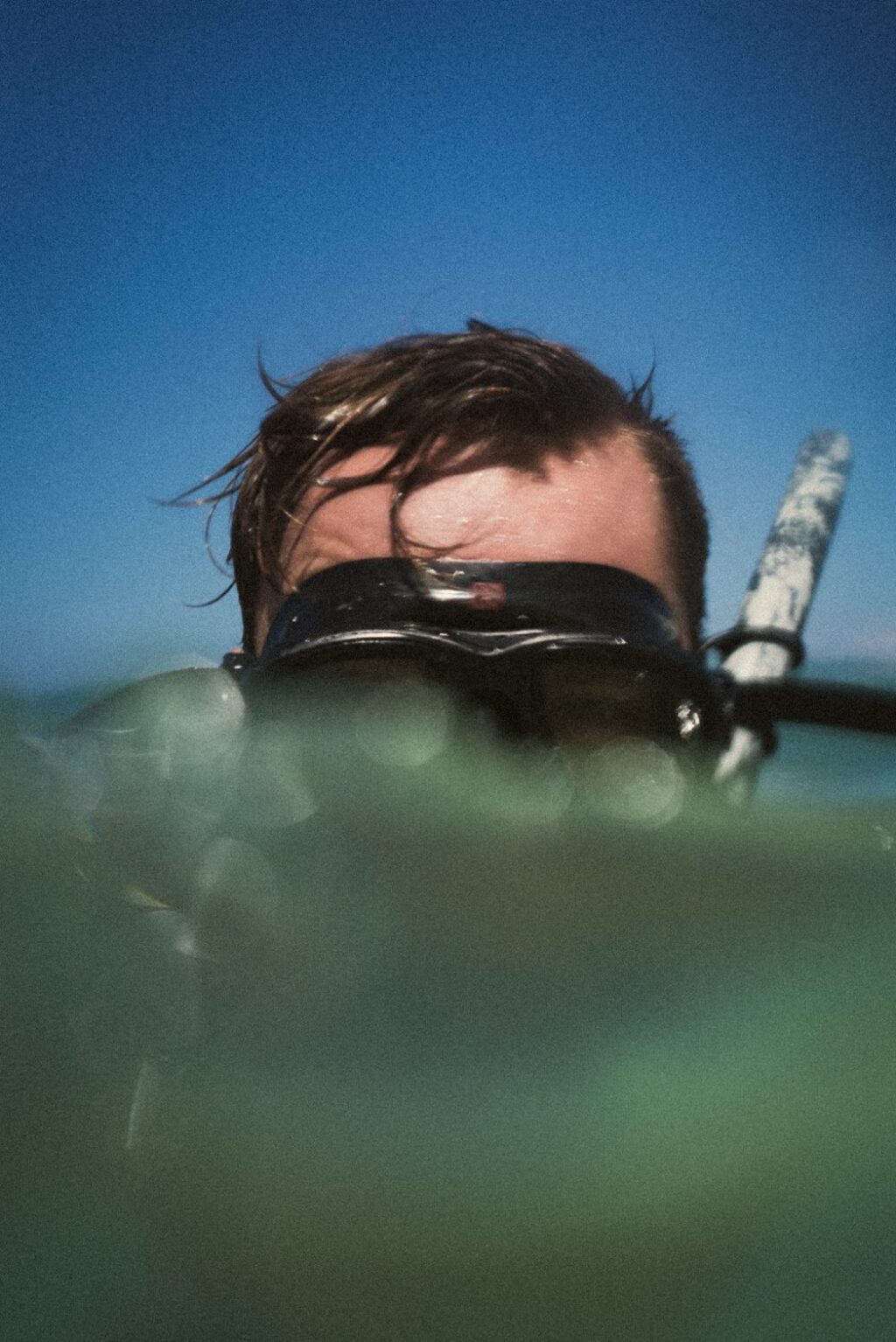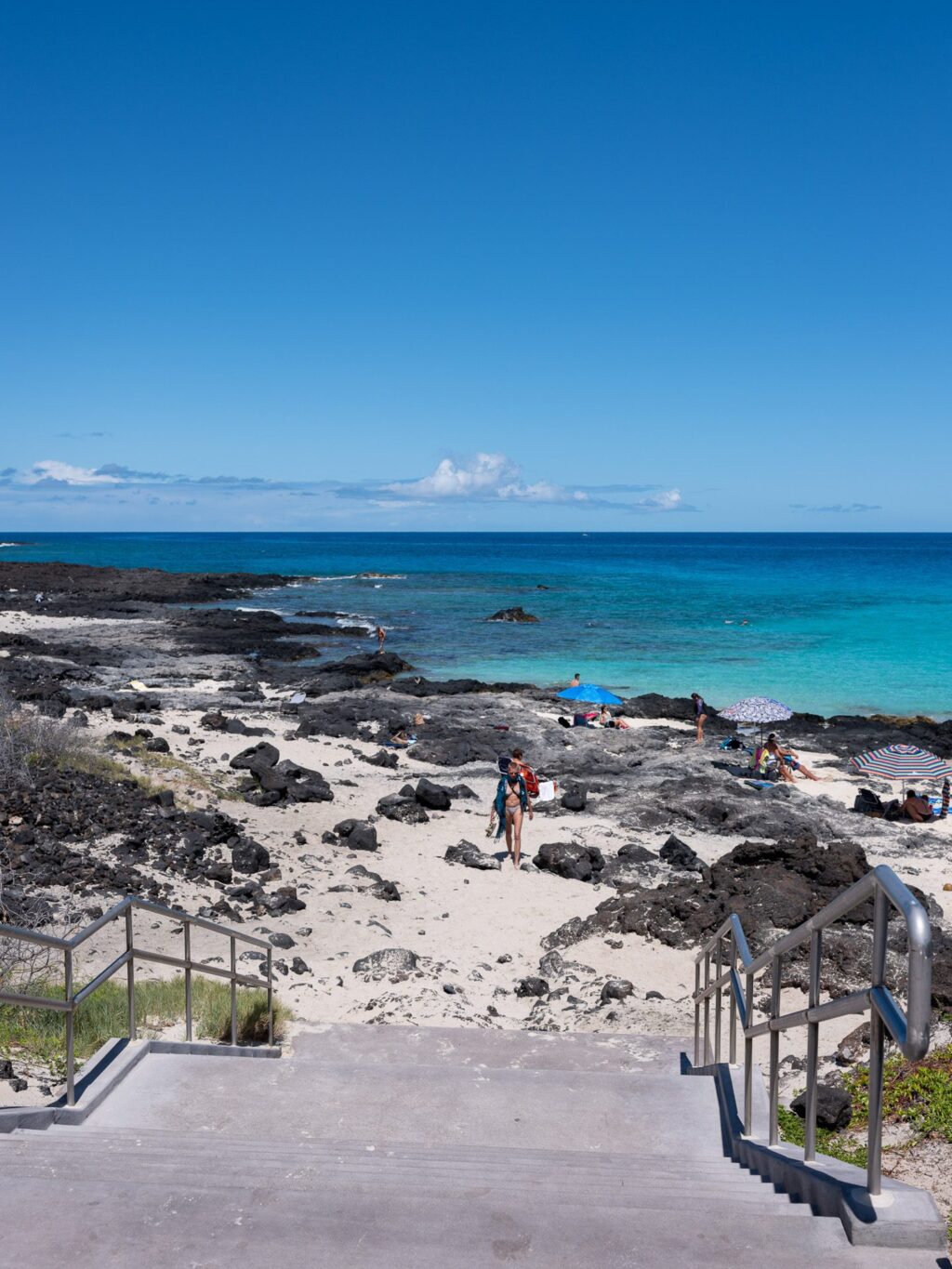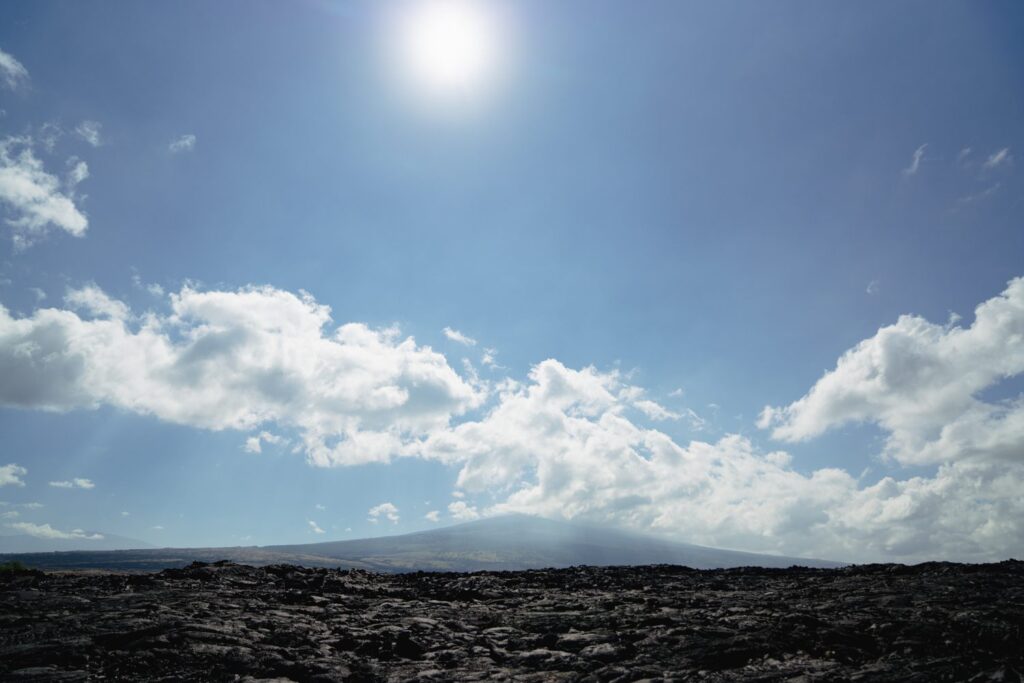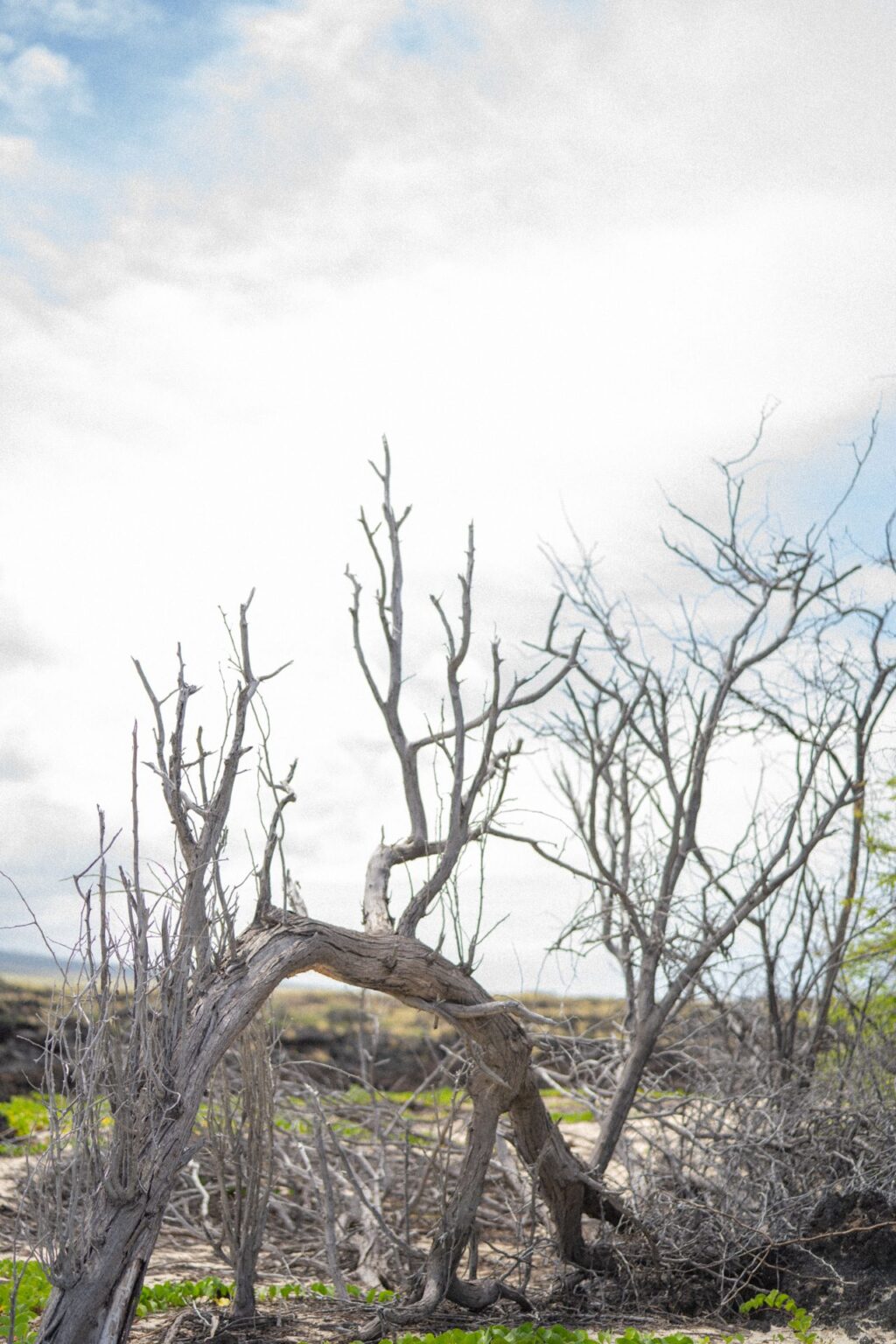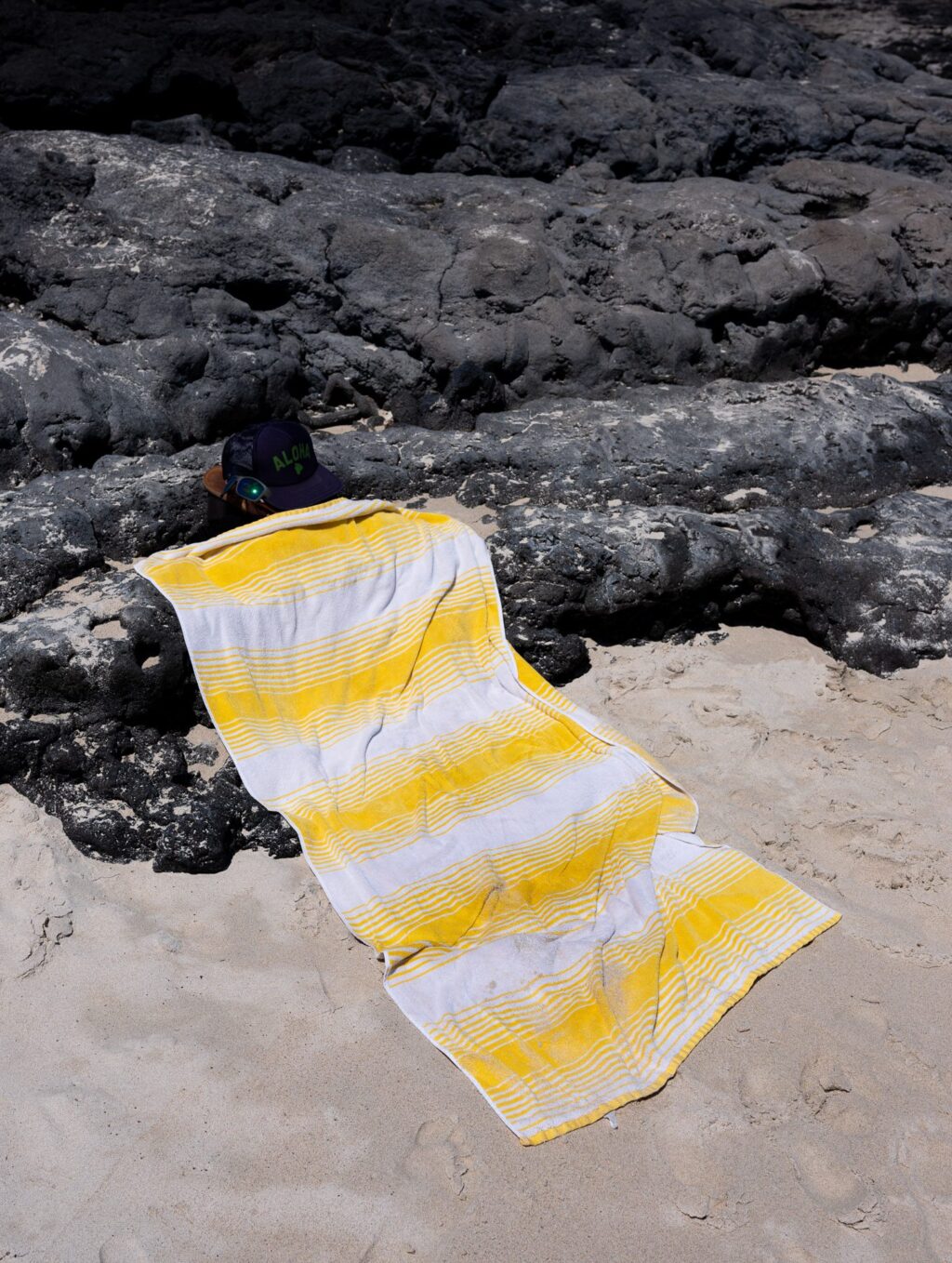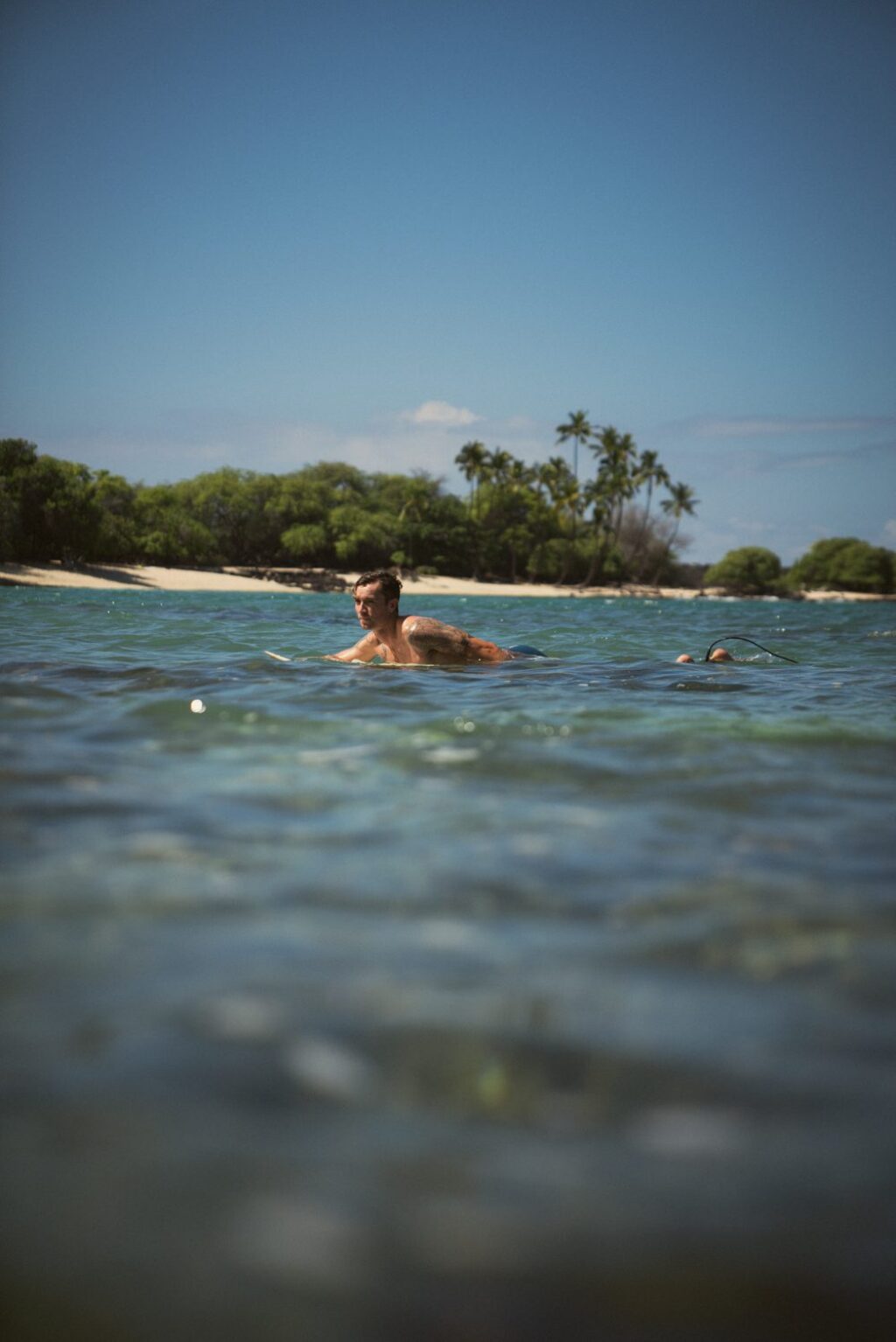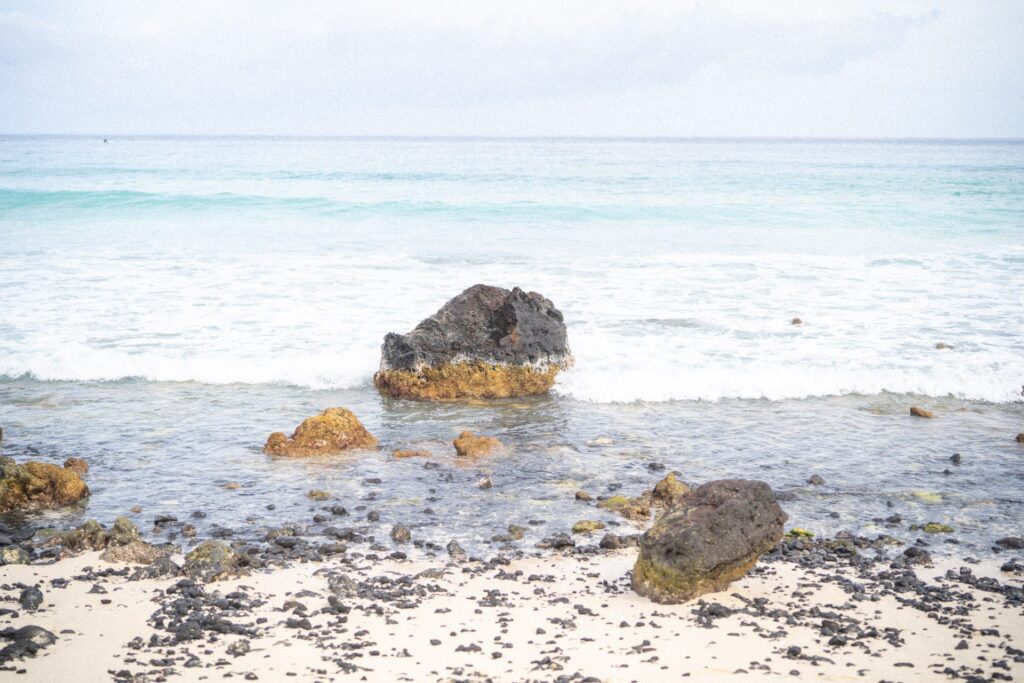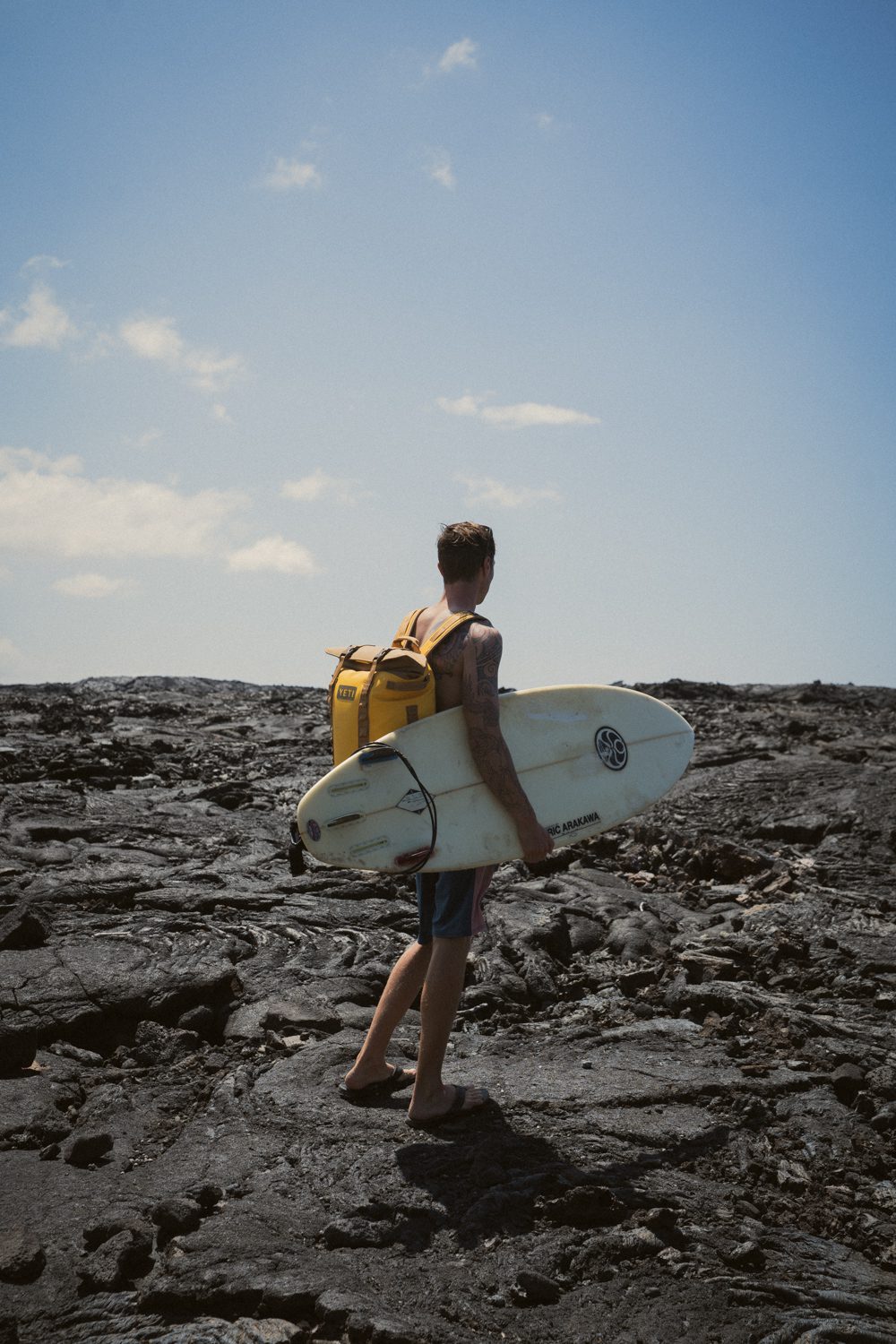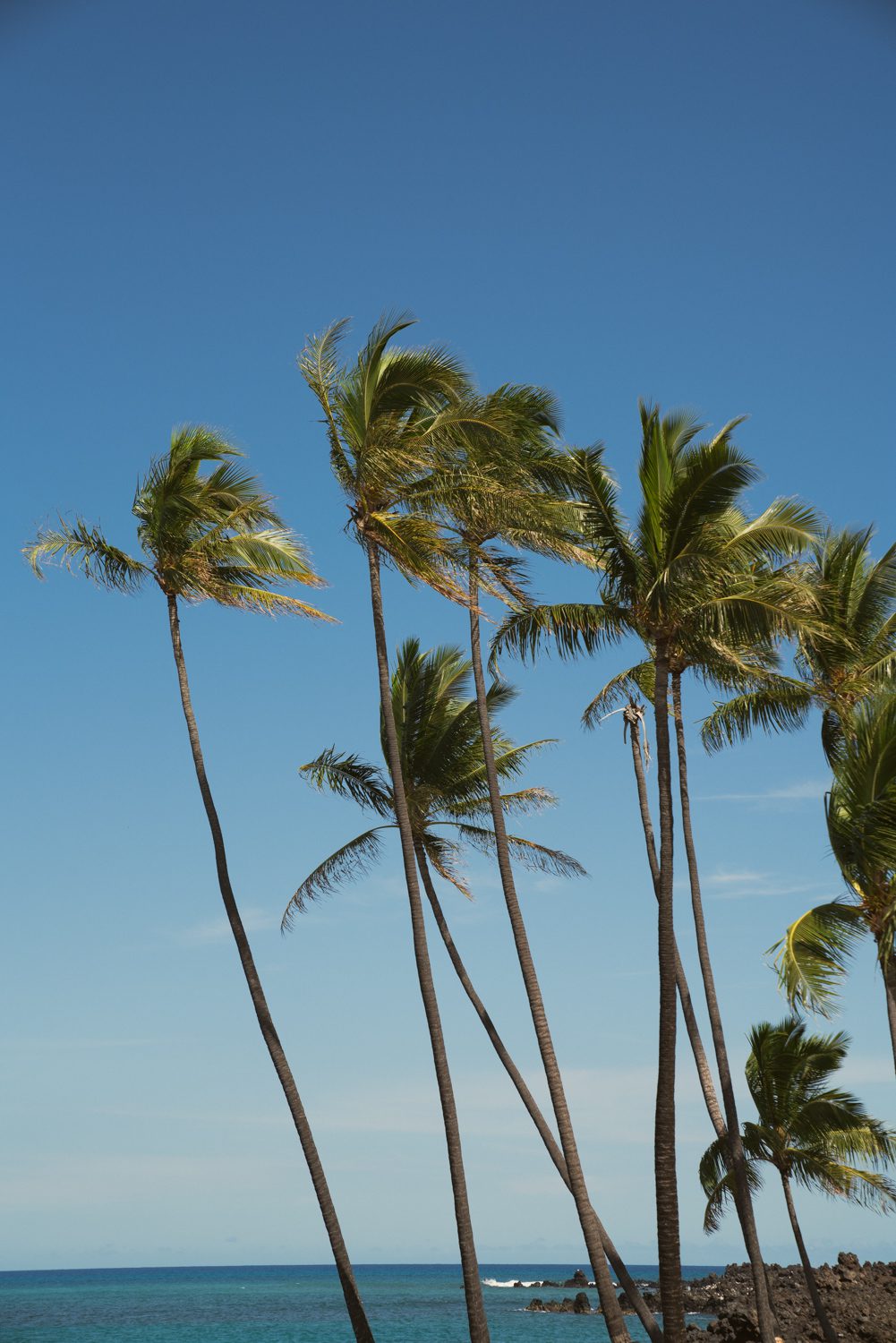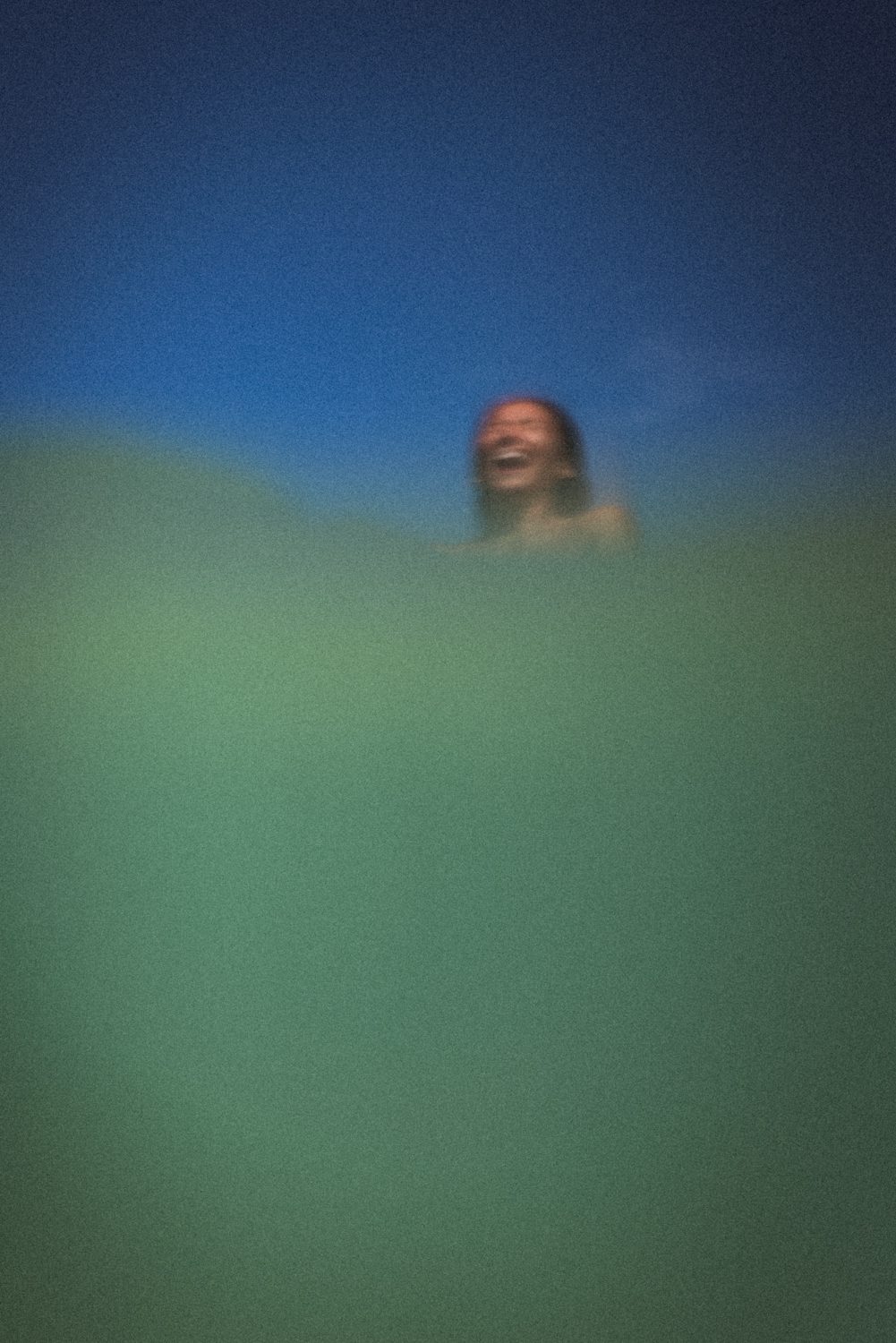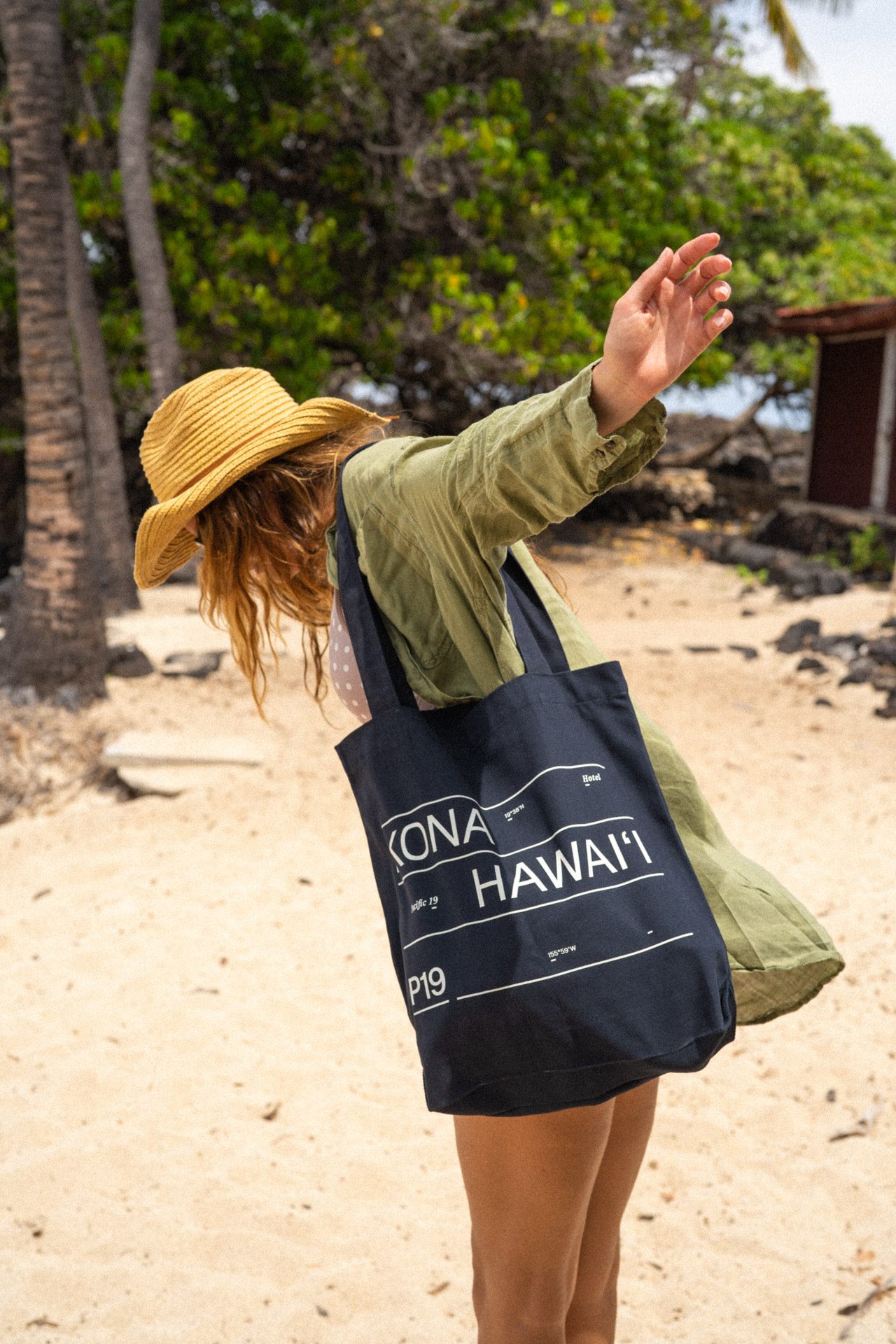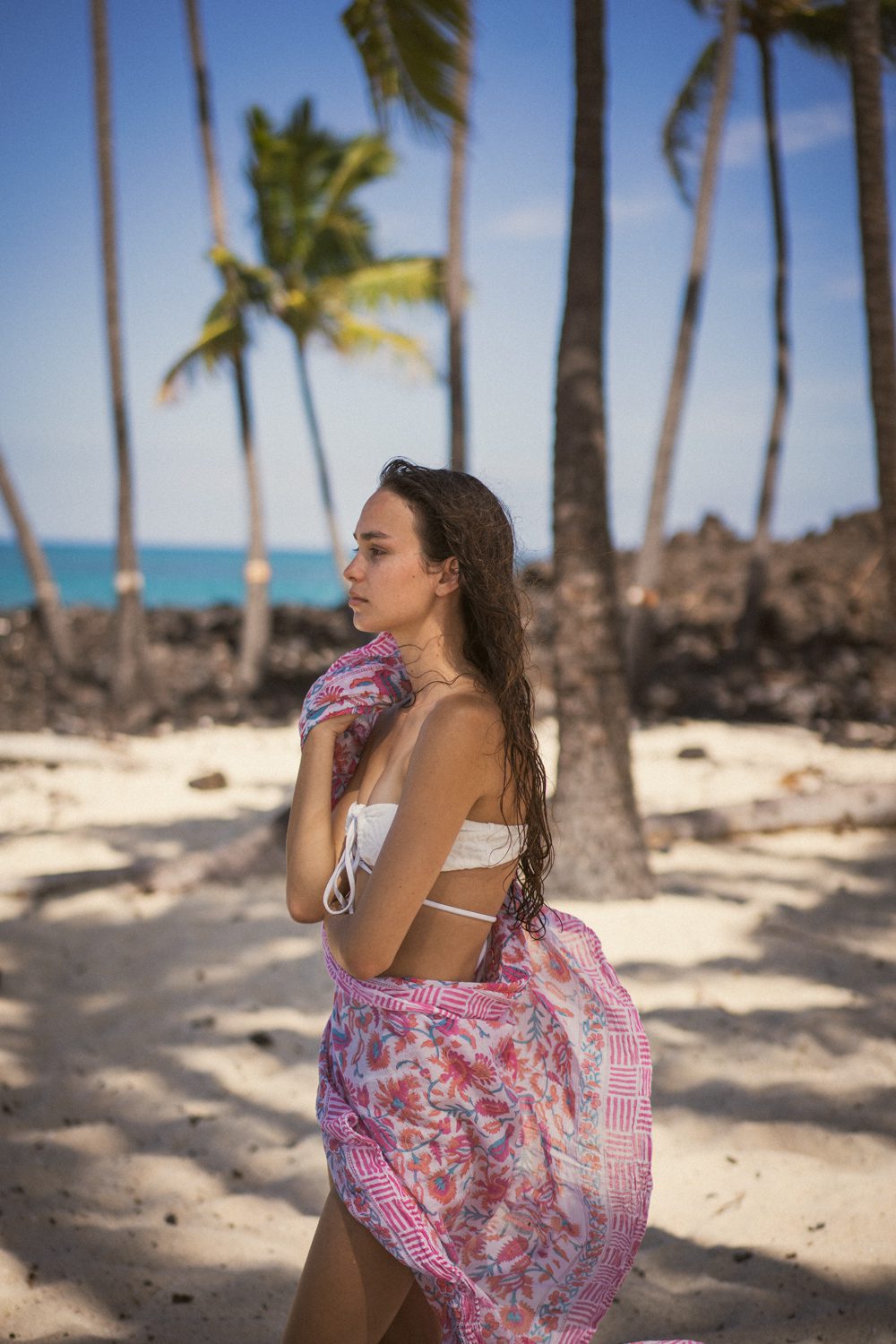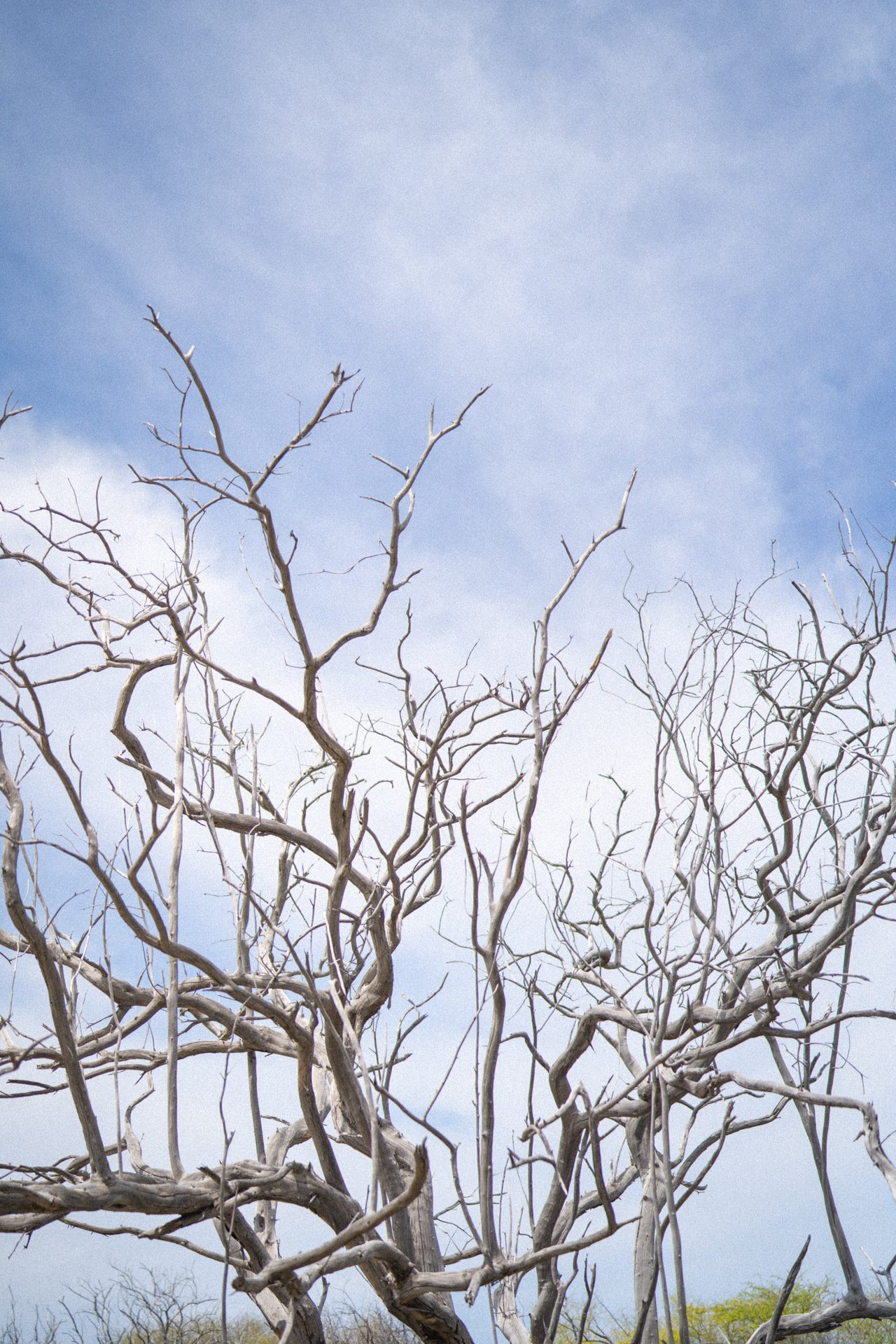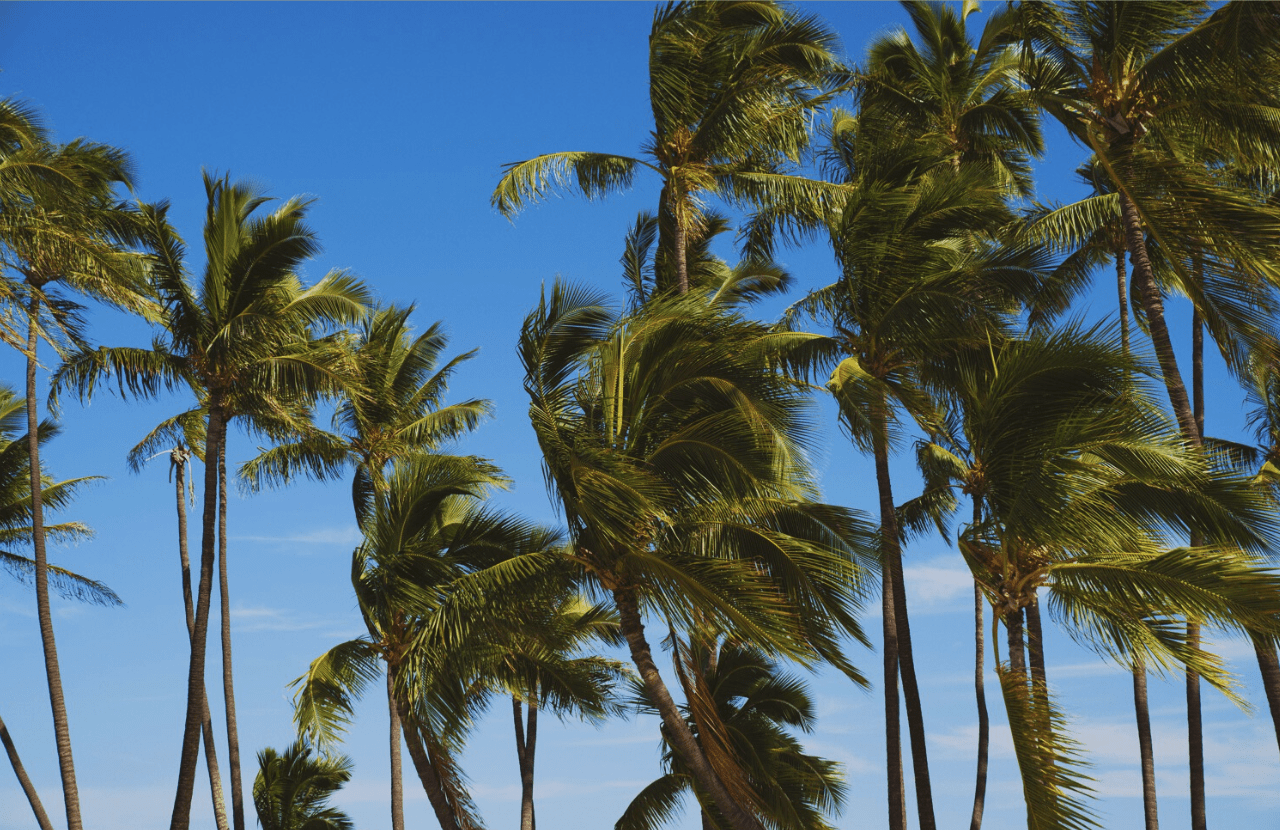Kekaha Kai State Park
BEACH | 11.5 MI FROM P19
The search for a perfect beach day is over.
A barren, desolate land. A hot, dry shore. These are some of the translations of Kekaha Kai State Park. Maybe not quite what you think when you imagine the words Hawaiian vacation. But look deeper. Hike longer. Don’t be so quick to write off a park with three beaches only about twenty minutes north of the Kona airport as uninteresting. That’s what most people do. But you’re not most people, you’re a traveler. Sipping mai tais is great — and you’ll do your share of that — but you also want to see what this dry, seemingly empty landscape offers. It’s got history, destruction and, well, it’s got options.
The three beaches within the park have varying accessibility. Want to check out Kua Bay? No problem. Turn into the park near Puʻu Kaʻili, the large hill on the ocean side of Queen Kaʻahumanu Highway (Highway 19).The other two beaches? A little bit more of an adventure. You’ll want a car with high clearance to take the road out to Mahaiʻula. If you decide to head out to Makalawena, then bring your walking shoes. And pack extra water because this truly is a barren landscape, and you’re going to need to hydrate. All beaches are open from 8:00 am – 6:45 pm.
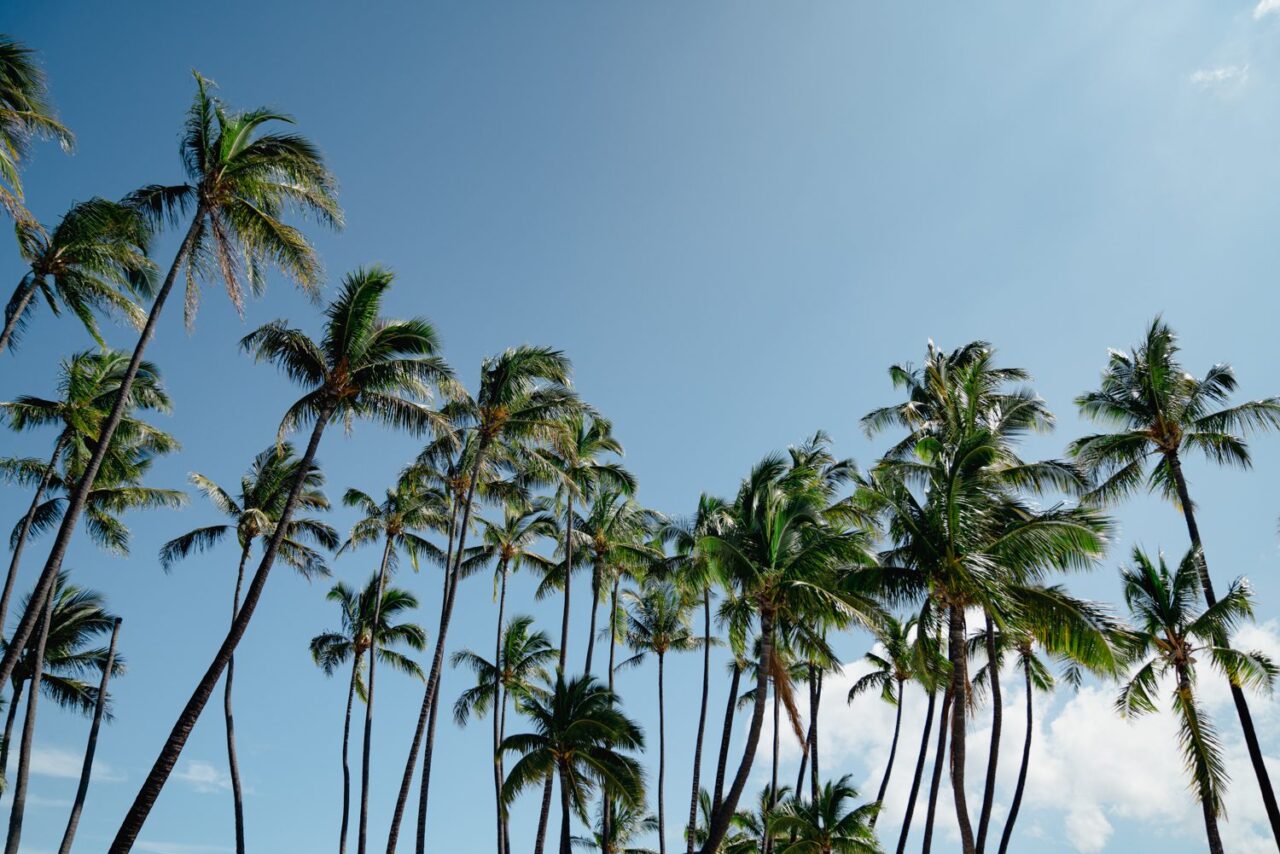
The park itself borders the north edge of one of Hualālai’s latest eruptions in 1801. A massive torrent of lava ripped through farms, fishing ponds, and several villages filling a deep bay. The coast was remade as lava destroyed anything in its wake. At that point, the Hawaiians didn’t yet have a written language, so what we know of the eruption was passed down through the moʻolelo, the Hawaiian oral tradition of myths and legends, and was only written down a couple of decades later.
King Kamehameha stepped up to appease the volcano Goddess Pele with offerings during this eruption. You’ve heard his name before because he’s responsible for unifying the islands and creating the Kingdom of Hawaii. His actions during this flow gave him clout before he went on to dominate the other island. Plenty of wild boars had been thrown onto the molten rock, but nothing happened. It wasn’t enough. Finally, King Kamehameha gave a sacrifice of his own and cut off a lock of his hair to throw onto the flow. The hair and head are sacred to Hawaiians, and within days, Pele ceased the eruption. The three beaches north of this eruption are now some of the best on the island.
Beach I
Maniniʻōwali (Kua Bay)
If anyone tells you to go to Maniniʻōwali beach then yes, you should trust their recommendation, but no one actually calls it that. It’s known as Kua Bay, a sliver of a beach with a shock of white on black — fresh lava turning into crunched up coral sand. Go early to snag a parking spot at the end of the paved road, especially on weekends. This beach is the most popular of the three in the park. It’s easy to guess why; the hint was the paved part.
Turn toward the ocean directly across the road from the West Hawaii Veterans Cemetery and drive to the small parking lot from Highway 19. You’ll find flush toilets, showers, and lifeguards on duty. It’s about a three-quarter-mile white sand beach framed by black lava rock. Perfect access to turquoise waters for swimming, kayaking, and snorkeling with a reef that extends along the shoreline to protect the bay.
Beach II
Mahaiʻula
Enough of this paved road business, there are other options here for people craving a bit more of an adventure. If you’ve got a 4x4 or a vehicle with high clearance, then between mile markers 88 and 89 off Highway 19 you’ll find the road to Mahaiʻula. Though calling it a “road” might be a bit of an exaggeration. If you’ve got a lower vehicle, or are worried about voiding your rental warranty with dings along the underside of your car, don’t despair; you can park by Queen Kaʻahumanu Highway and hike all the way in. It’ll take you about 30 minutes to walk the mile-and-a-half.
If you’re driving in, park in the lot and then walk five minutes to get to Mahaiʻula. The beauty of these beaches is that they’re so incredibly close to Kona, with sandy shores and even patches of shade, yet not super popular because of the rough road in. This is your “beach day” beach. Lay out your picnic spread and pretend you’re on a deserted island. On a beach like this, it’s not too much of a stretch.
Beach III
Makalawena
If you’re looking for that extra adventure, then you’re almost there. From the parking lot by Mahaiʻula, take the path north over rough lava rock to get to Makalawena. It’s about a mile walk to perhaps the best beach in Hawaii — not too busy and usually safe for swimming when the waters are calm. Bring everything you need for a beach day including an umbrella as there’s little shade. And just when you think it can’t get any better, check out the Queen’s Bath, a natural brackish pool behind the beach. The basin’s natural freshwater spring mixes with salt water from the ocean. Pop in to wash off after your ocean dip, or just soak in your own private pool. If you’ve driven in, be sure to give yourself plenty of time to get back out before the gate closes at 7:00 pm.
Hawaiian Monk Seals or ‘llio holo I ka uaua “Dog that runs in rough water”
If you’re lucky, you might see one of the most critically endangered animals in the United States. Hawaiian monk seals are endemic to the ocean around the state of Hawaii — they’re found here and only here. There are only about 1500 individuals and they require lots of space. If you see a seal on the beach, stay at least 50 feet away. If a mother is with its pup, stay at least 150 feet away. Monk seals can be unpredictable, especially those few weeks a momma is rearing a cub.
After only about a month breastfeeding and learning the ropes of seal life, the mother will take off and leave the cub to its own instincts. If you catch a seal sunbathing on the beach, be sure to follow all guidelines to keep it, and yourself, safe.


